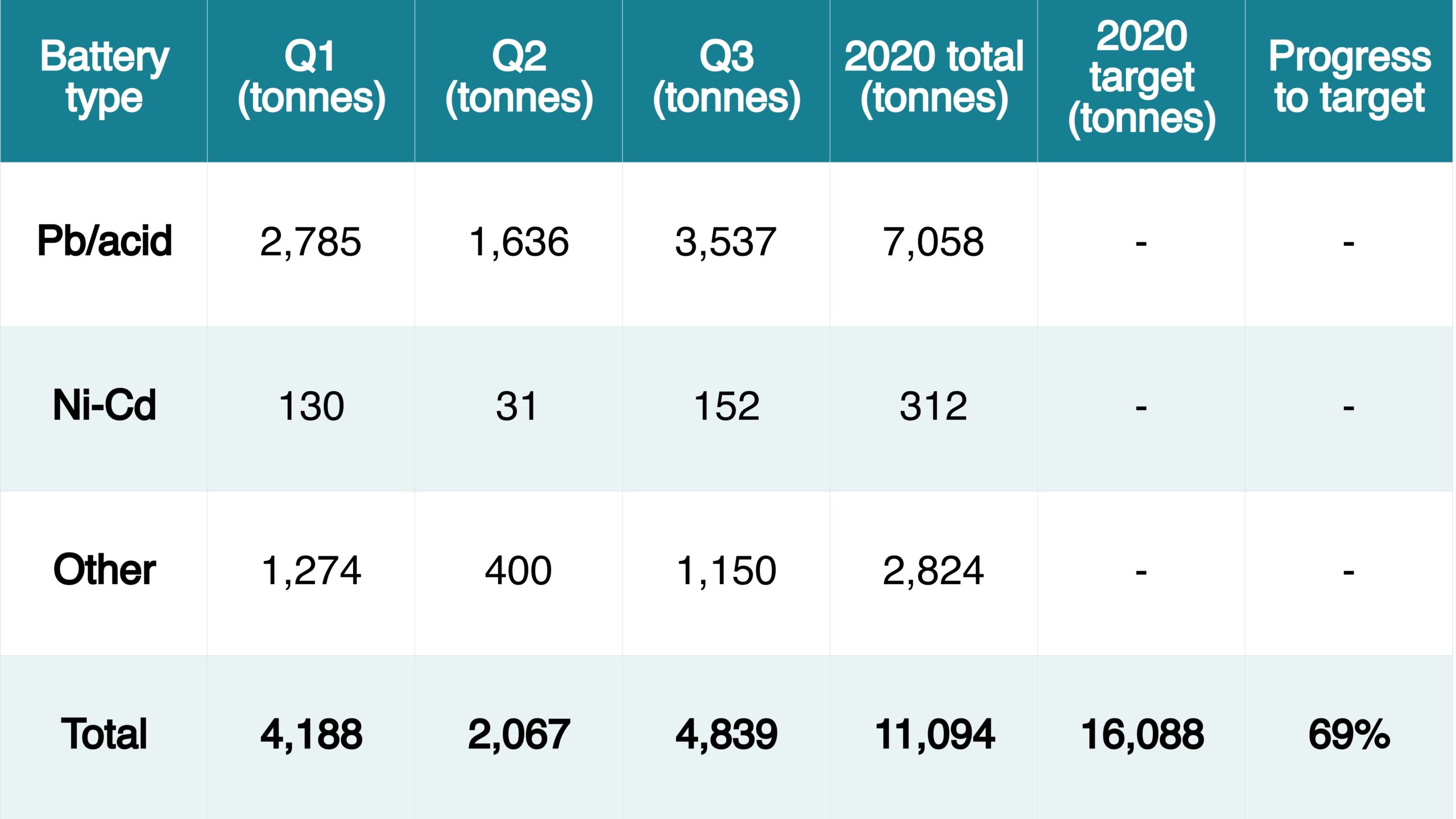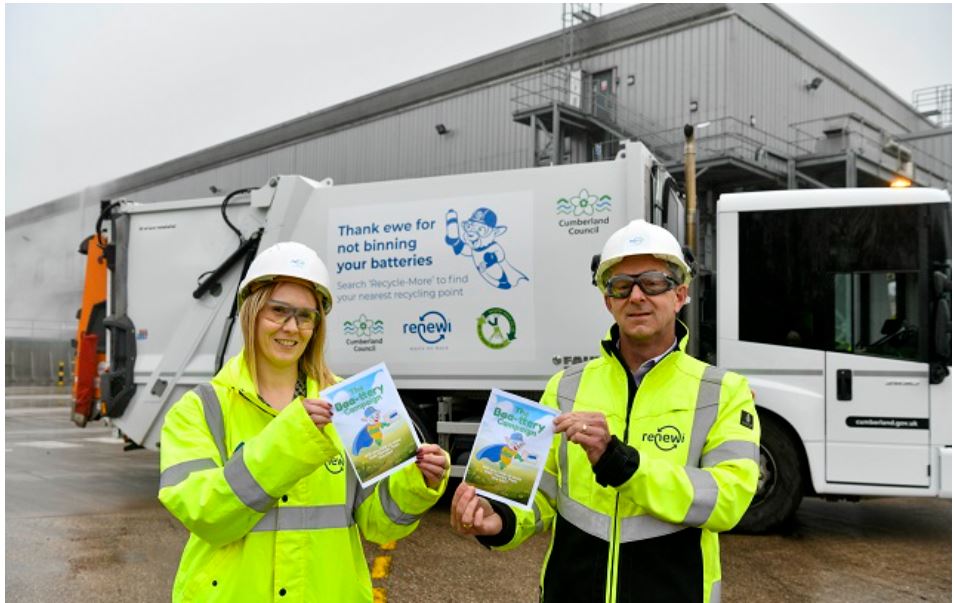A total of 11,094 tonnes of waste portable batteries has been collected in 2020 so far, 69% of the target total of 16,088 tonnes.

The UK target collection tonnage for 2020 is 45% of the average annual amount of portable batteries placed on the UK market (POM) by scheme members and small producers in 2018, 2019 and 2020.
Sector experts remain confident the target will be met, despite a fall in collection during the second quarter of 2020.
This is because the fourth quarter of the year, covering October to December, traditionally sees a high volume of batteries placed on the market and collected.
The coronavirus pandemic had a significant impact on the numbers of batteries collected in the second quarter, which covers April to June. However, the third quarter of 2020 saw the volume of batteries collected recover to levels comparable to those seen prior to the pandemic. This can be seen in the table below.

Lead acid
Of the 11,094 tonnes of batteries collected so far in 2020, 3,537 tonnes were lead acid batteries. Only 957 tonnes of lead acid batteries have been placed on the market this year. Long-running concerns remain within the battery recycling sector that the high number of lead acid batteries masks the fact not enough portable household batteries are being collected.
Pandemic
John Redmayne is the managing director of the European Recycling Platform, a producer compliance scheme. He emphasised the sector’s recovery since the first national lockdown.

“The impacts of the pandemic and associated lockdowns are very apparent in the latest set of UK battery statistics,” he told letsrecycle.com. “After seeing a dramatic reduction in collections of waste portable batteries in Q2 data, there was a significant rebound in Q3, with the highest volume of portable lead acid batteries seen in a quarter since records began.
“It is always difficult to identify the exact reasons for this – but clearly many battery disposals were delayed rather than entering the residual waste stream. This is welcome news for both schemes and processors and also an encouraging sign for the future in terms of public and business attitudes to battery recycling.”

Mr Redmayne was optimistic the recovery meant the target would be met. He said: “As the target is based on current and previous two years batteries placed on the market it remains a moving figure until Q4 data is received – but our projections suggest that, at the end of Q3, the UK had achieved approximately 70% progress to the 2020 target. With Q4 typically a period of both high POM and collection volumes for batteries it suggests the target should be within reach.”
Lead acid
Jon Clement is head of procurement at compliance scheme Valpak. He drew attention to the issues associated with lead acid batteries.
“Q3 POM was as strong as has been seen in recent years”
Mr Clement told letsrecycle.com: “Whilst sales of batteries have been impacted in 2020, Q3 POM was as strong as has been seen in recent years. Likewise, for collections the ‘other’ category in Q3 returned to normal levels although no catching up was evident.
“The lead acid volume was notably high, which may in part be a result of vehicles standing idle during the first lockdown and with reduced use thereafter causing battery failures.
“A significant proportion of the lead acid battery evidence is derived from protocols which include volumes of vehicle batteries. It further distorted the POM versus collection differential, which is already known to be implausible.
“This in itself should continue to encourage compliance schemes and other stakeholders to expand the collection network and reduce the reliance on evidence generated from lead acid batteries.”










Subscribe for free